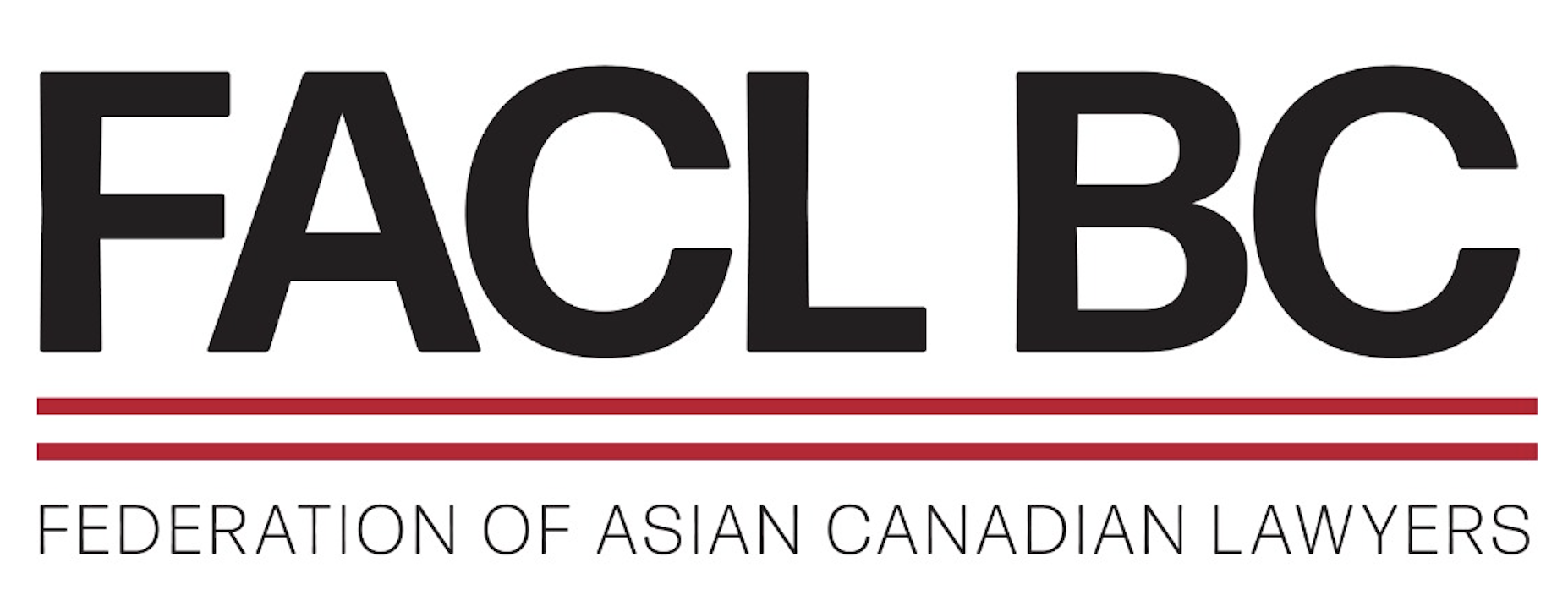BC Courts’ Pronouns Practice Directives: What You Need to Know
A FACL BC Resource
In December 2020, the BC Supreme Court and BC Provincial Court implemented new practice directives that direct counsel and parties to state an individual’s name, title, and pronouns when making an introduction. FACL BC applauds the introduction of these practice directives that aim to make courtrooms more inclusive of transgender, non-binary, and other gender diverse people. FACL BC’s Advocacy Committee created this resource about the directives and why they are important.
Click here for a PDF version of this resource.
What are pronouns and titles?
In English, we use pronouns to refer to other people in the third person.
Examples: She is a lawyer. / He is a lawyer. / They are a lawyer.
We also use titles to show professionalism or respect.
Examples: Ms. Lee / Mr. Lee / Mx. Lee
People’s titles or pronouns should not be assumed based on name, appearance or voice. When others make assumptions about someone’s gender, and assume which title/pronouns to use, they can unintentionally misgender that person. Misgendering (addressing someone using the wrong gendered language) is harmful and disproportionately impacts transgender people.
(Sources: BC Provincial Court ENews Article and CBABC Gender-Inclusive Pronouns: FAQ)
What are the practice directives?
-
On December 16th, 2020, the BC Supreme Court and BC Provincial Court implemented new pronoun practice directives (BC Supreme Court PD-59 and BC Provincial Court NP 24)
-
When counsel or parties are introducing themselves, their client, a witness, or any other person, they are asked to include the individual’s pronouns to be used, as well as their name and title (e.g. “Mr./Ms./Mx./Counsel [Last Name]”)
Why is this important?
-
The pronoun practice directives provide an opportunity for all people appearing before the court to be addressed by their correct pronouns, which can make the court experience more inclusive and respectful for transgender and gender diverse people
-
Gender identity is deeply personal, and people who are transgender or non-binary often experience harassment, discrimination, and violence because their gender identity or gender expression is different from their sex assigned at birth
-
Misgendering is harmful, and can be deeply distressing, as it ignores and dismisses an individual’s gender identity
-
The directive shifts toward the normalization of asking people how they want to be addressed, rather than making potentially harmful assumptions (based on name, appearance or voice) that the misgendered individual has the burden to correct
(Sources: BC Provincial Court ENews Article; CBABC Gender-Inclusive Pronouns: FAQ; and Ontario Human Rights Commission)
FACL BC applauds the introduction of these practice directives that aim to make courtrooms more inclusive of transgender, non-binary, and other gender diverse people.
What has changed?
| Old Practice |
Current Practice |
|
“My name is Jane Lee, spelled L-E-E. I am the lawyer for Joe Carter.”
(Name, spelling of last name)
|
“My name is Ms. Jane Lee, spelled L-E-E. I use she/her pronouns. I am the lawyer for Mx. Joe Carter who uses they/them pronouns”.
(Name, spelling of last name, title, pronouns)
|
(Source: BC Provincial Court ENews Article. For more examples of introductions, see the CBABC Counsel Introduction Scripts.)
Pronunciations
The gender-neutral title “Mx” sounds like “Mix”.
People may choose to use pronouns other than she/her/hers, he/him/his, and they/them/theirs. One example is ze/hir and ze/zir pronouns.
How to pronounce these pronouns:
-
Ze sounds like Zee
-
Zir sounds like Zere
-
Hir sounds like Here
Ze/hir pronouns: “Ze is a writer and wrote that book hirself. Those ideas are hirs. I like both hir and hir ideas.”
Ze/zir pronouns: “Ze is a writer and wrote that book zirself. Those ideas are zirs. I like both zir and zir ideas.”
(Sources: CBABC Counsel Introduction Scripts and MyPronouns.org)
Experiences of transgender, non-binary and gender diverse Asian people
Sources
